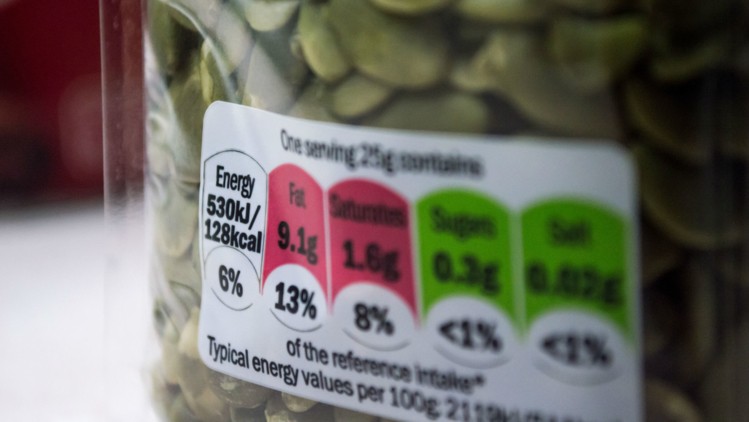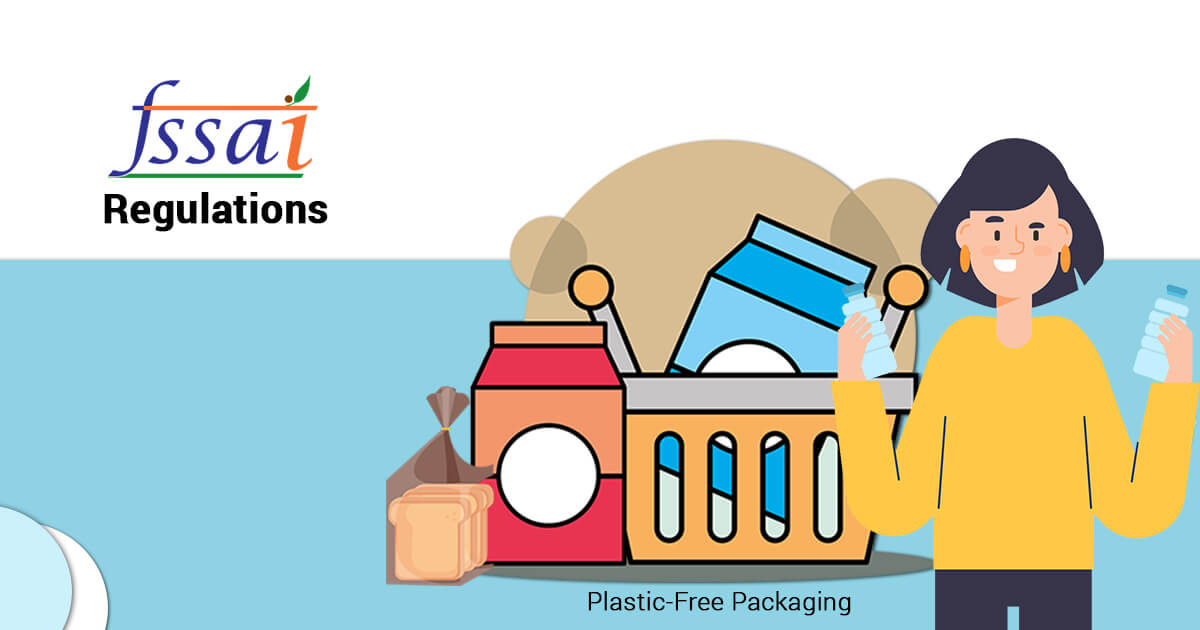FSSAI Packaging and Labelling Regulations

Khushboo Priya | Updated: Jan 15, 2019 | Category: FSSAI
The food product that you purchase every day has several specific labeling on its packaging. To understand the significance of those labeling, it’s imperative to understand FSSAI packaging and labeling regulations. Hence, you are required to read this blog thoroughly to ensure you don’t miss any crucial detail regarding food packaging and labelling .
But before we plunge directly onto the regulations, let us first understand both the terms packaging and labeling individually. Let us start with the introduction of both the terms-
Table of Contents
What is Labelling and Packaging?
Food product labelling is a method of communicating product information between companies and their consumers. Furthermore, it represents basic product information, as well as nutritional and safety details, and functions as a vehicle for marketing and advertising.
However, food packaging means wrapping or covering food for protection, interfering resistance, and special chemical, physical, or biological needs.
Nowadays, consumers have become smarter and health conscious, and hence, they rely on labels as a way of distinguishing between several foods and brands to make informed food choices. Therefore, well-elaborated information about the label leaves a good impression on the consumers looking for required details about the product.
Laws or regulations applicable to Food Labelling and Packaging
Whenever we talk about foods or food products, FSSAI license or registration is mandatory to obtain. Furthermore, the food business operators are supposed to abide by the rules and regulations of FSSAI which is the Food Safety and Standard Authority of India. Apart from these, there are certain rules and regulations that FBOs have to follow for labelling and packaging. Those are as follows
- Essential Commodities Act, 1955;
- Standards of Weight Measures Act, 1976 and the Standards of Weights and Measures (Packaged Commodities) rules, 1977 (SWMA);
- The Meat Food Products Order, 1955 (FPO);
- The Edible Oil Packaging Order, 1998;
- Agmark Rules;
- Agricultural Produce (Grading and Marketing) Act 1937;
- Prevention of Food Adulteration Act 1954 and the Prevention of Food Adulteration Rules, 1955 and its amendment, 2003 (PFA);
- Codex Standard (CAC) 1964 (not a law);
- Export (Quality Control and Inspection) Act, 1963;
- Bureau of Indian Standards, 1986.
Typically, the Indian Regulatory system falls under the category of compulsory legislation enforced by the various ministries and voluntary standards formed by several organizations to serve the country.
Earlier, the consumers were not sure whether they were getting the exact weight and quantity of the food product for what they were actually paying. Hence, to eradicate this problem, the concerned authority issued some measures, one of which is the Standards of Weights and Measures Act (SWMA).
Standards of Weight Measures Act, 1976 and the Standards of Weights and Measures (Packaged Commodities) rules, 1977 (SWMA)
Some of the most important aspects of SWMA are:
Standard Units (Section 4):
The Chapter 1 of Standard Units (Section 4) describes that every unit shall be based on the metric system. However, the units to be adopted should be of the International System of units recommended by the General Conference on Weights and Measures.
Declaration on Packaged Commodities for Interstate Trade or Commerce:
The Chapter IV (Section 39) describes that for interstate trade or commerce of commodities in packaged form, with the intention of selling or distributing, every commodity in packaged form has to bear upon it, on a label securely attached to it. Furthermore, the label must be definite, plain and contain a declaration of the sale price of the package, identity of the commodity in the package, etc.
Standard packages:
According to the Act, one of the most vital rules is with respect to the requirements that specific commodities are to be packed and sold only in standard packages.
Maximum admissible error:
According to the SWMA rules, the maximum allowed errors associated with the quantity contained in individual packages should be according to the one described under the First Schedule of SMWA rules. However, the maximum permissible error for commodities to be sold by weight, measure or number should be as per the Fifth Schedule of the SWMA rules.
Label declarations:
SWMA rules states that the declaration on every retail package should contain the certain necessary details described later in this blog.
Consequences of violating the food packaging and labelling rules and laws
Penalties for violating the food packaging and labelling laws differ with the kind of offense. They are as described below:
- For violation of rules under Section 39: If the person packs, stores, distributes, sells or delivers commodities, which doesn’t meet the requirements of the Act and the Packaged Commodities Rules, then he/she would be punished with a fine which may exceed up to Rs. 5000.
- The penalty for repeating the above offence: Furthermore, if the person continues the offence, the person could be subject to imprisonment of up to 5 years.
Essential Information for display on the food packets
To ensure the well-being and safe guard the interest of the consumer, the FSSAI (Packaging and Labelling) Regulations, 2011, asks that every packaged food article has to be labelled and it must display the following information:
- The name of the food:
The food name is the foremost FSSAI guidelines on the labelling of food products. As the name suggests, the name of the food product must be in clear format on the packaged product in clear font.
- List of the ingredients:
It means the elements used to prepare the final product. Hence, it is imperative that the manufacturer presents all the ingredients fairly and don’t cheat the end-customer. In case, the manufacturer tends to cheat the consumer, he can get into trouble.
- Nutritional information:
It represents the calories which come from sodium, carbohydrates, fat, saturated fat, Trans fat, dietary fibre, proteins, sugar, Vitamin A, Vitamin C, calcium, and iron present in the product.
- Declaration regarding Veg or Non-Veg:
Not everybody in India eats Non-Veg food. Hence, it’s obligatory to declare on the food packaging whether the item is vegetarian or non-vegetarian. Furthermore, the green color dot on the packet indicates that the product is vegetarian whereas the red dot represents non-vegetarian.
- Declaration regarding Food Additives:
Food additives are added to the food to preserve flavour and enhance its appearance and taste. Therefore, it is highly essential to declare the additives added on the label or the package.
- Name and complete address of the manufacturer or packer:
According to concerned FSSAI regulations, the manufacturer of food has to mention the complete address of his factory which must include street address, city, state, and zip code. If these details aren’t present there, then the product would be considered as fake.
- Net Quantity:
It refers to the weight of the product. The weight of the product and packaging are generally combined together and then mentioned in the net quantity.
- Code No./Lot No./Batch No.:
According to FSSAI guidelines on labelling of the food product, the manufacturer must mention the Code No,/Lot No./Batch No. Besides, these numbers are the mark of recognition through which the food can be found in the manufacture and recognized in the distribution.
- Date of manufacture or packing and expiry date:
It’s one of the most essential things that one should display on the packaging. It’s for the safety purpose of the consumer. Furthermore, if the consumer consumes the food after the expiry date, then it will harm the health of the consumer.
- Country of Origin for imported food:
It represents the nationality of imported goods. Moreover, it also refers to the area where such goods have grown up or have been produced, manufactured or processed.
- Instructions for use:
As the name suggests, it displays details on the use of the food product.
How Swarit Advisors can help you with the same?
We have a team of experts who are well-versed with FSSAI rules and regulations. Besides this, they are highly talented and have experiences in dealing with various clients. The experts will update you about the latest notifications on food labeling and packaging, along with the updates on FSSAI. Even if you find that your business plans aren’t at the right place, then you can approach our business plan consultant to help you with a powerful business plan.
For any further queries regarding the guidelines on food packaging and labelling, do contact Swarit Advisors.














